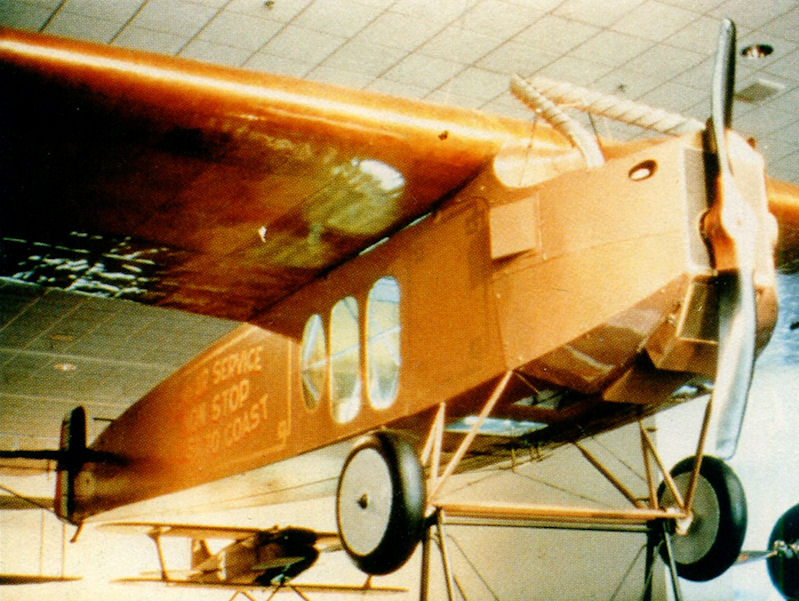
Fokker F.IV
Построенный заводом "Fokker" в Веере, однодвигательный свободнонесущий высокоплан Fokker F.IV значительно превосходил по размерам все другие самолеты, ранее выпущенные фирмой. Рассчитанная на перевозку 10 пассажиров, машина имела фюзеляж прямоугольного сечения с открытой кабиной пилота, прямо перед передней кромкой крыла. Пассажирская кабина размещалась непосредственно под крылом. Шасси неубирающееся, типичной для "Fokker" конструкции с общей осью. Горизонтальное оперение F.IV, совершившего первый полет в 1921 году, имело подкосы, киль отсутствовал, а руль направления был выполнен с аэродинамической компенсацией, как на F.II и F.III. Был построен еще только один F.IV, и в отсутствие коммерческих заказов Энтони Фоккер совершил удачную сделку, продав оба самолета авиационной службе Армии США (USAAS), присвоившей им обозначение T-2. После испытаний в Маккук Филд одна машина (AS 64234) была переделана в санитарный вариант, рассчитанный на перевозку двух носилок, получив новое обозначение A-2. Другой самолет (AS 64233)оснастили дополнительными топливными баками, окрасили в яркий цвет и нанесли на борту надпись "ARMY AIR SERVICE NON-STOP COAST TO COAST". Эта машина создала хорошую рекламу USAAS и компании Фоккера, когда 2-3 мая 1922 года, пилотируемая лейтенантами Джоном А. Макриди и Оукли Дж. Келли, совершила беспосадочный перелет через США.
ТАКТИКО-ТЕХНИЧЕСКИЕ ХАРАКТЕРИСТИКИ
Fokker F.IV
Тип: 10-мест. транспортный самолет
Силовая установка: один V-образный 12-цилиндровый двигатель Liberty мощностью 420 л. с. (313 кВт)
Летные характеристики: максимальная скорость 154 км/ч
Масса: пустого снаряженного 2552 кг; максимальная взлетная 4875 кг
Размеры: размах крыла 24,80 м; длина 14,96 м; высота 3,60 м; площадь крыла 89,00 м!
Описание:
- Fokker F.IV
- Flight, December 1921
THE FOKKER "F.IV”
Фотографии
-
Мировая Авиация 135
Оказавшийся неудачным в коммерческом отношении транспортный самолет Fokker F.IV сделал неплохую рекламу фирме, когда в 1922 году совершил беспосадочный перелет через США. Ныне машина бережно сохраняется как экспонат американского музея.
-
Flight 1921-12 / Flight
The Fokker "F.IV." - Three-quarter front view.
-
Мировая Авиация 95
Регистрационный номер: AS64233 [2] Без посадки через США. 2-3 мая 1923г.: лейтенанты Авиаслужбы Армии США О. Келли и Дж. Мак-Риди стали первыми авиаторами, совершившими беспосадочный перелет через Северную Америку - на моноплане Fokker Т-2 (фото) они пролетели из Рузвельт Филд, Лонг-Айленд, в Роквелл Филд, Сан-Диего, за 26 ч 50 мин. Средняя скорость на маршруте составила 141,9 км/час. Для перелета самолет получил топливные баки повышенной емкости и усиленное шасси.
-
Flight 1923-04 / Flight
Регистрационный номер: AS64233 [2] THIRTY-SIX HOURS IN THE AIR: On April 18 Lieuts. J . A . Macready and Oakley C. Kelly, of the U.S. Army Air Service, established a world-record endurance flight at Dayton, Ohio, when, flying over a triangular course of about 31 miles, they remained aloft for 36 hrs. 5 mins. 20 secs., and covered 2,541.2 miles The machine they used, shown above, is the same Fokker F.N. with 400 h.p. high-compression Liberty on which they flew for 35 hrs. last year. Fuel for 44 hrs. weighing 10,500 lbs. was carried.
-
Air Enthusiast 2006-01 / G.Salerno - A Troubled Birth /Air forces/
Регистрационный номер: AS64234 -
Flight 1921-12 / Flight
Fokker F.IV 380 H.P. Rolls Royce, 400 H.P. Liberty or 450 H.P. Napier Lion Engine
- Фотографии





